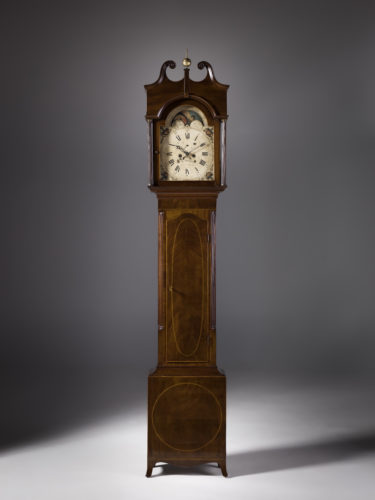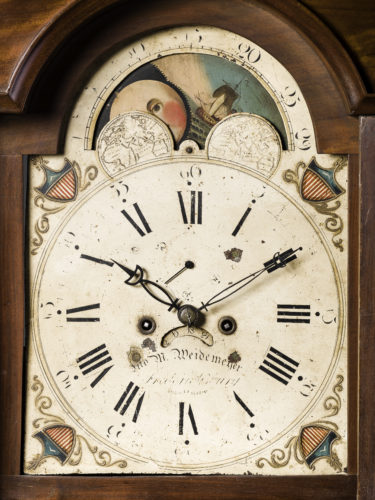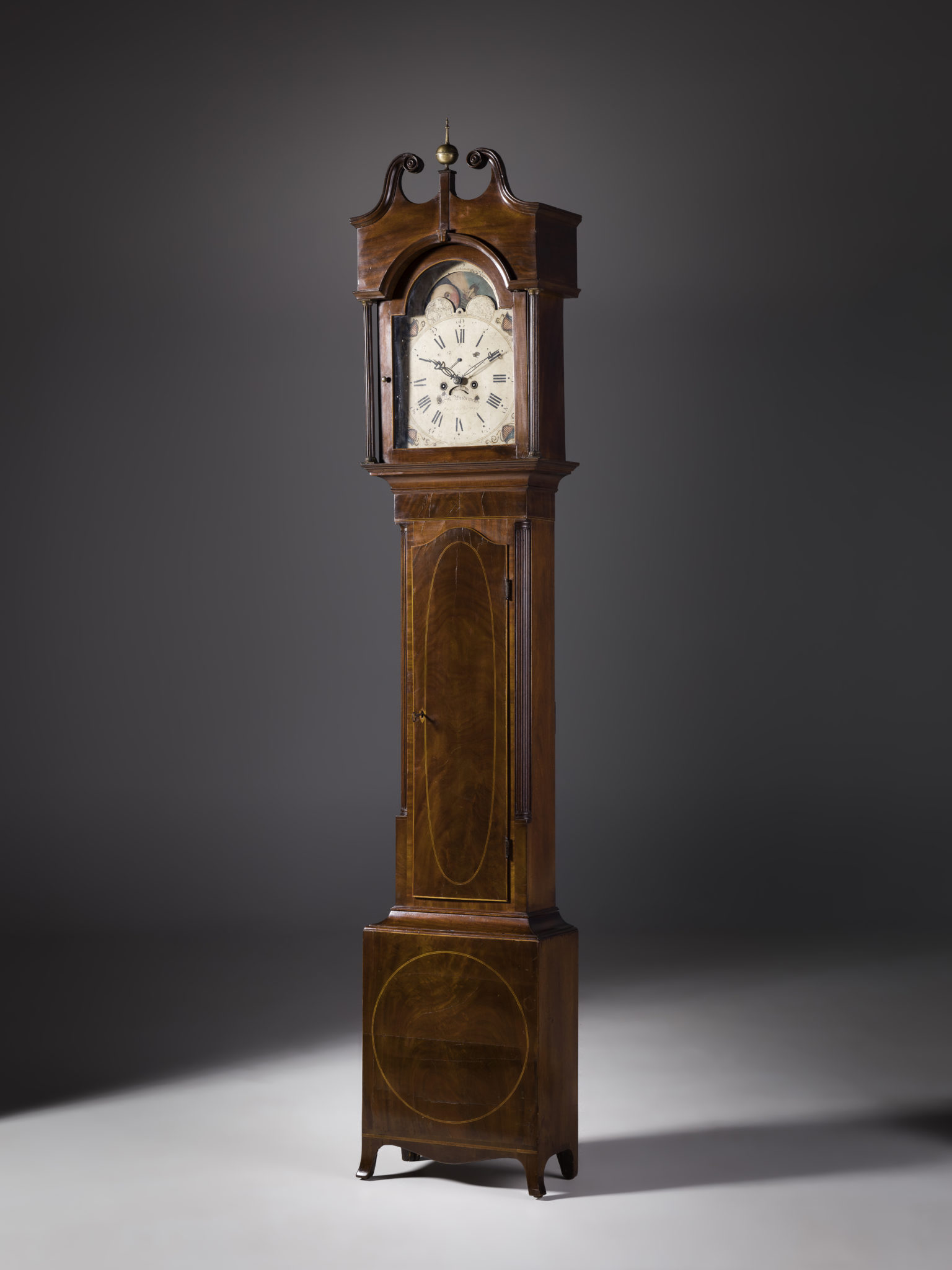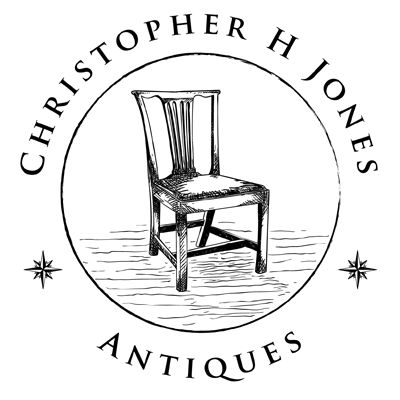
Tall Case Clock
Mahogany, white pine with light wood Inlay
Works by John Weidemeyer (c. 1780-1830)
Fredericksburg, Virginia
Circa 1805
Fredericksburg, along with Winchester and Baltimore, were the principal clockmaking centers located in the American south during the Colonial and Federal periods. During the Federal era, John Weidemeyer, (w. 1804-1822), who was also a silversmith, was the best known and most important Fredericksburg clockmaker. Only a handful of clocks signed by Weidemeyer have survived and only fewer, as with our example, are fitted into elaborate, stylish Federal cases with mahogany veneers and extensive inlays.
Stylistically the case relates to Baltimore work. This is not surprising since Weidemeyer worked in Baltimore upon his arrival in the United States and furniture styles, particularly in tidewater Virginia, were often driven by the fashionable forms seen in urban centers. In terms of overall form and decorative embellishments, the case is very similar to another Weidemyer clock descended in the Jones Family of “Beaumont” in Orange County, a short distance from Fredericksburg, suggesting that both cases were made in the same local shop. (See MESDA Research File S-5353)
Weidemeyer first appears in Fredericksburg records in an 1800/01 directory, and by 1805/6 seems to have been established, leasing property from the prosperous cabinetmaker Alexander Walker. He was a kinsman of Thomas Walker (d. c. 1786) the best-known Fredericksburg clockmaker in the 1770s and 1780s. There is no direct linkage between Alexander Walker and this clock case, however Walker frequently advertised the availability of choice mahogany and veneers, multiple furniture forms and references to his ability to compete on price and style and quality with Baltimore and New York shops. Weidemeyer also made similar claims for competitiveness with urban goods suggesting the pressure felt by more rural artisans to maintain their economic viability.

The dial with its patriotic decorative scheme is not signed but is characteristically American in origin. It is attributed to Spencer Nolan and/or Samuel Curtis of Boston who specialized in painted clock dials. Their dials were retailed as far south as Philadelphia. The iconography which includes shields and a ship flying an American flag relates to other regional clocks. (It is not mounted on a false plate which would be the norm for an English dial.) Weidemeyer moved to Charlottesville circa 1825 where he continued as a silversmith. Although he probably continued to repair clocks there are no known examples of his clocks from Charlottesville.
The clock and case are in excellent condition. The works have been cleaned and adjusted as needed by conservator Doug Whitesell and are in good working order. The case is constructed of mahogany with white pine as the principal secondary wood. Minor repairs to the inlay and surface were undertaken in 2017 by conservators Leckemby and Buisch. There are old repairs to the scroll arches, the right foot facing, the left upper cove molding at the neck, and the circle inlay on the case base. The brass final is a period appropriate replacement.
For additional information on Weidemeyer and Fredericksburg clocks see Southern Furniture catalog # 172, Journal of Early Southern Decorative Arts, November 1992, and MESDA Research Files 5353, 17057, S-6112 , S-5002.
sold


